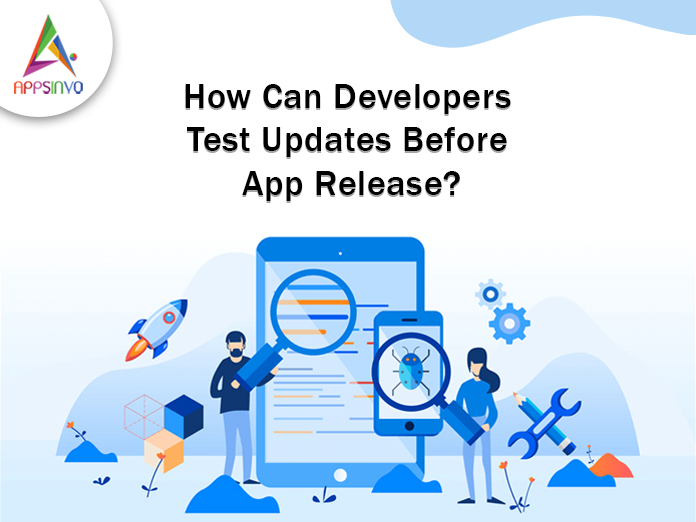Testing changes before deploying an app is a critical step in the development process. It ensures that new features work as expected while maintaining existing functionality. Here’s a detailed look at how developers test updates, summarised in point a thing’s.
1. Unit Testing.
- Definition: Unit testing is testing individual application components or functionalities in isolation.
- Purpose: To guarantee that each section of the code functions properly.
- Tools: Frameworks such as JUnit (Java), NUnit (.NET), and Pytest (Python) are widely used.
- Advantages: Early issue identification, simplicity of debugging, and higher code quality.
2. Integration Testing.
- Definition: Tests how different modules or services interact with one another.
- Purpose: To discover problems that arise when merging multiple components.
- Tools: Tools for APIs include Postman and TestNG for Java applications.
- Benefits: Identifies issues with data flow and communication between modules.
3. Functional Testing.
- Definition: Validates that the app meets the required standards.
- Purpose: Ensure that the program meets user expectations.
- Tools: Selenium, QTP, and Cucumber are common options.
- Benefits: Ensures that features function properly and fulfill user expectations.
4. User Acceptance Test (UAT)
- Definition: End-users do validation tests before the app goes live.
- Purpose: To guarantee that the application satisfies corporate needs and is user-friendly.
- Process: Users test the app in a real-world setting and provide comments.
- Benefits: Helps discover usability concerns and ensures the product meets user expectations.
5. Beta Testing.
- Definition: A period in which the app is made available to a limited number of people before its official launch.
- Purpose: Collect input from genuine users and discover any key flaws.
- Types: include open beta (accessible to anyone) and closed beta (limited to a chosen group).
- Benefits: Provides insights into user behavior and identifies flaws that may not have been spotted previously.
6. Performance testing.
- Definition: Evaluate the app’s performance under various scenarios.
- Purpose: To ensure the application can withstand expected load and stress.
- Types: Includes load, stress, and scalability testing.
- Tools: JMeter, LoadRunner, and Gatling are routinely utilized.
- Benefits: Ensures app stability and responsiveness during high traffic.
7. Security Testing.
- Definition: Checks the app for weaknesses and security problems.
- Purpose: To protect user data while maintaining trust.
- Methods: This includes penetration testing, vulnerability scanning, and risk assessments.
- Tools: OWASP ZAP, Burp Suite, and Nessus are widely used tools.
- Benefits: Identifies security threats and assures regulatory compliance.
8. Regression Testing.
- Definition: Tests current functionalities after modifications to guarantee they continue to work.
- Purpose: To ensure that new changes were made without hurting the present code.
- Tools : Automation includes Selenium, Test Complete, and QTP.
- Benefits: Lowers the likelihood of introducing new problems into the system.
9. Automation Testing
- Definition: Uses scripts and tools to automate testing procedures.
- Purpose: To accelerate testing and ensure uniformity.
- Tools: Selenium, Appium, and TestNG are popular tools for automation.
- Benefits: Saves time, enhances test coverage, and enables multiple tests without manual intervention.
10. Continuous Integration and Deployment (CI/CD)
- Definition: A collection of techniques that enables developers to push code updates on a regular and consistent basis.
- The purpose: To automate the testing and deployment processes.
- Jenkins : Travis CI, and CircleCI are some popular CI/CD tools.
- Benefits: Allows for immediate feedback on code changes, which improves program quality.
11. Monitoring & Analytics
- Definition: Post-launch monitoring to track app performance and user interaction.
- Purpose: To collect statistics on how users engage with the app.
- Tools: Google Analytics, Firebase, and New Relic.
- Benefits: Provides insight into user behavior and aids in the prioritization of future improvements.
Conclusion
Testing updates before app release is a multifaceted process that uses an array of testing approaches. From unit and integration testing to beta testing and CI/CD processes, each method is critical to delivering a high-quality product. By applying these tactics, developers may greatly reduce the chance of defects, increase user satisfaction, and ensure the integrity of their programs.













[…] post How Developers Test Updates Before App Release appeared first on Appsinvo […]
Thanks for the informative blog! The detailed process of how developers test updates before releasing an app is really valuable
Thanks for this great blog The detailed explanation of how developers test app updates before release is really helpful and informative.
“Thanks for this informative blog! The process of testing updates before an app release is much clearer now. I really appreciate the tips and steps you’ve outlined to ensure smooth releases!”
I just wanted to say how impressive this article is! Your team is truly an expert at understanding digital marketing trends and staying ahead of them. The insights you shared about leveraging SEO and AI in 2025 are absolutely spot on. I really liked how you focus not just on the latest tools and technologies, but also on how businesses can effectively integrate them into their strategies. we have also a similar blog Welkinlightmedia we specialize in creating tailored digital marketing strategies and cutting-edge app development solutions to help businesses achieve their goals. Whether it’s boosting online visibility through SEO, running result-driven ad campaigns, or developing seamless, user-friendly apps, we take a holistic approach to ensure our clients get the best of both worlds. We focus on providing measurable results that drive growth and success. If you’re looking to elevate your brand in the digital space or need a custom app built to streamline your processes, we’d love to chat and see how we can help!
This is a great, easy-to-understand explanation of how apps get tested! It’d be awesome if you did another post with some real examples of how developers actually do these tests in their work.